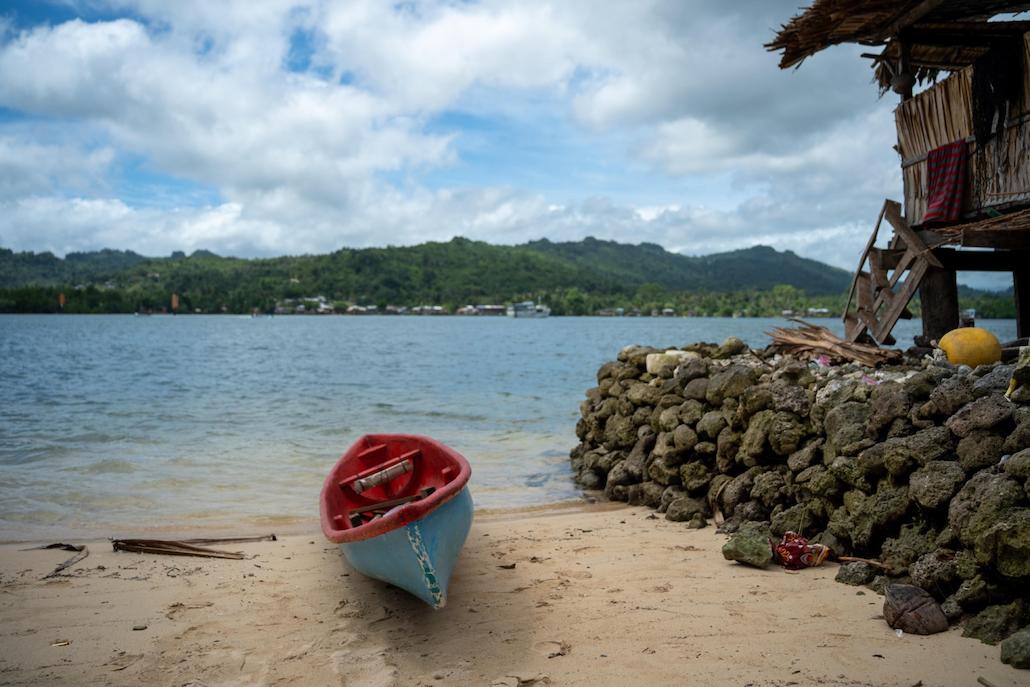Heavy, tropical rains fell throughout the night before we would visit the tiny fishing village of Lilisiana the following day.
One wouldn’t normally think twice about it raining in the Solomon Islands of the South Pacific; except the month we are here, August, used to be the driest month of the year, and the very middle of the dry season.
Now, thanks to global environmental degradation, seasonal disruptions have become the norm. This, along with dramatically warmer temperatures and rising sea levels threatening everything, have left people with no choice but to adapt.
These islands have literally become a laboratory on how to adapt to rising sea levels, as people here have been learning to live with these changes for decades.
I’m here with three of our partners with the Shifting the Power Coalition (STPC), which is the only women-led regional alliance in the South Pacific that is focused on strengthening the collective power, influence and leadership of diverse Pacific women in responding to disasters and environmental degradation.

Drone video of Lilisiana village from above. Video credit: Jason Gagame
This small village of traditional-style houses raised on stilts above the shore, midway up the west coast of the Solomon’s Malaita Island, is located largely along a narrow sand spit perched above rising seas.
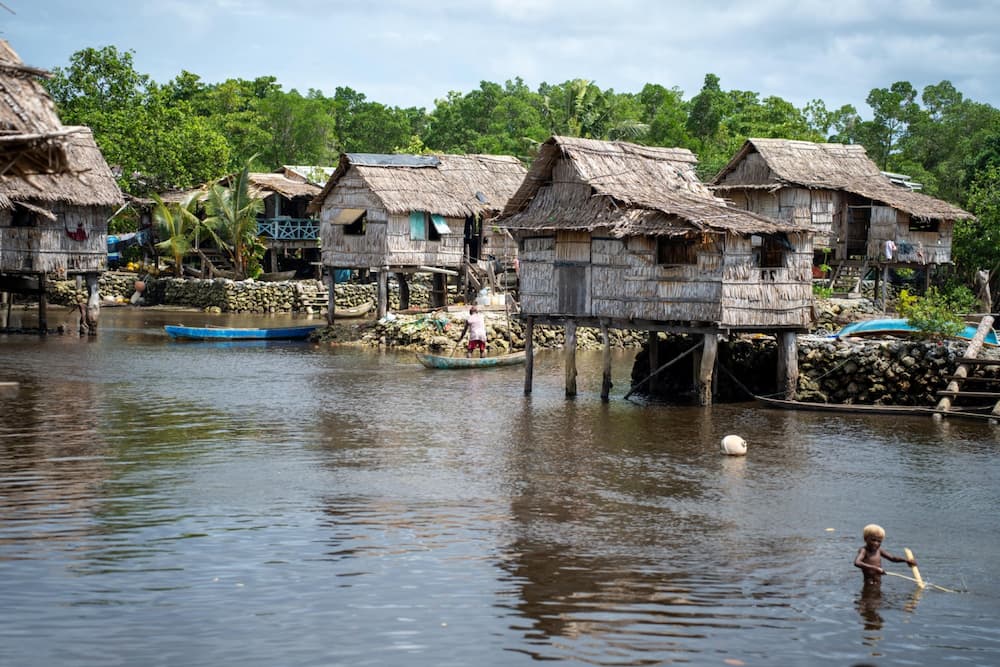
Virginia Tome, who lives on the neighboring island of Guadalcanal, is the program coordinator for a gardening project in this village. She is excited to show the results of the recently completed project, especially since rising tides have scoured away land around peoples’ traditional homes that for centuries was used for growing food.
“With this and future projects, the aim is to empower women and allow them to express themselves, to have income and learn new skills, and then share it with others,” she says as we walk along a rough dirt road to the village to see the project.
We step over and around deep potholes filled with rainwater, and during extreme tides, the village literally already becomes an island.
During king tides in December, children already often use canoes to travel around parts of the village that much of the year remain walkable.
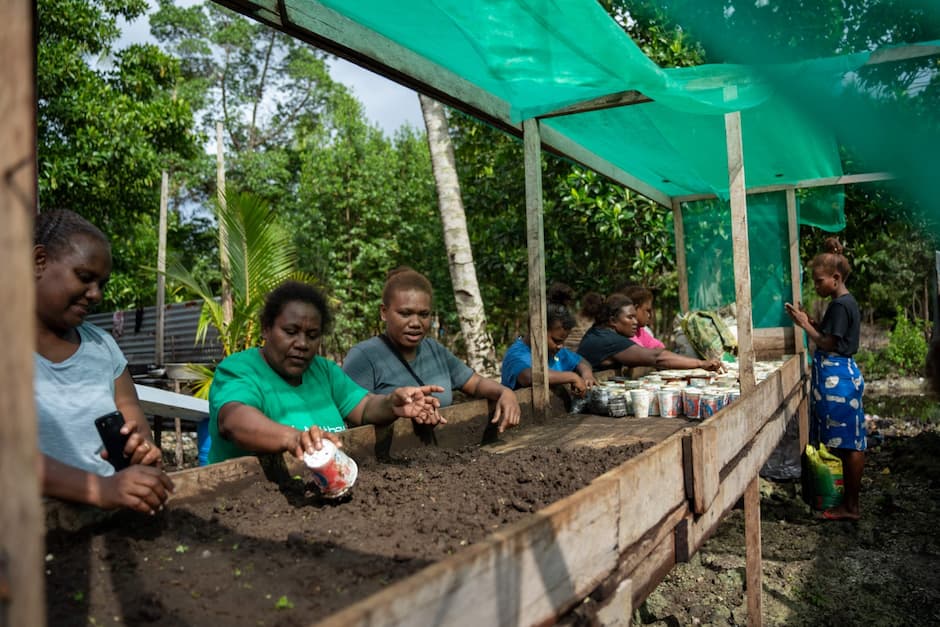
Several women from Lilisiana who are working with SPTC meet us and lead us straight to their garden project – a series of beds raised one meter above the ground, and covered by green cloth that moderates the hot tropical sun’s impact on seedlings.
Rich, dark soil fills most of the beds, where a crop of Chinese Cabbage had just been harvested by several of the women.
Many of them are tending seedlings for the next crop, which like the first, will be eaten by villagers as well as sold as a source of income.
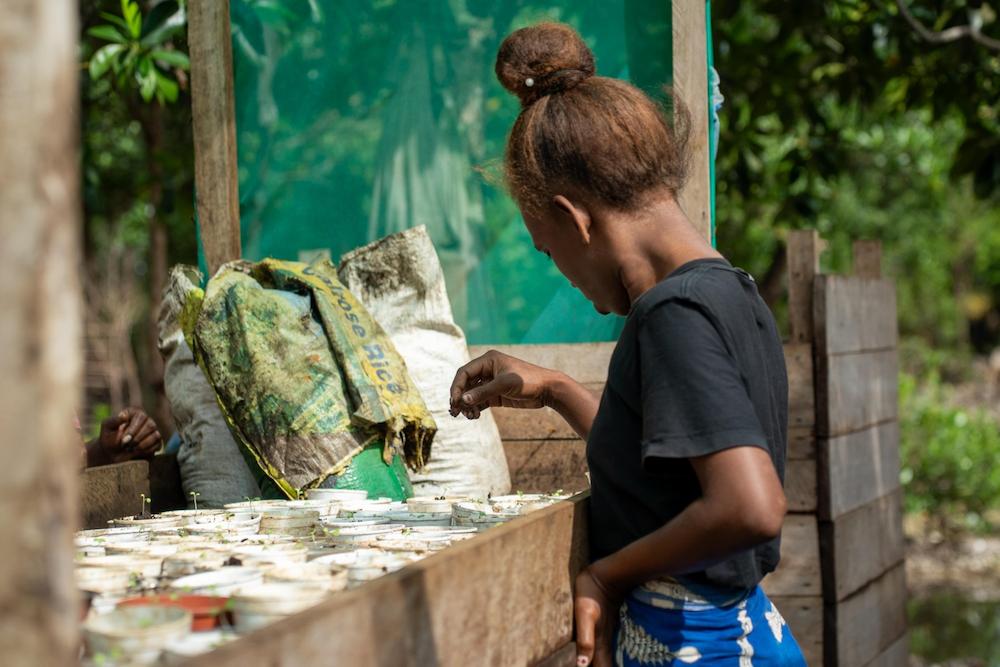
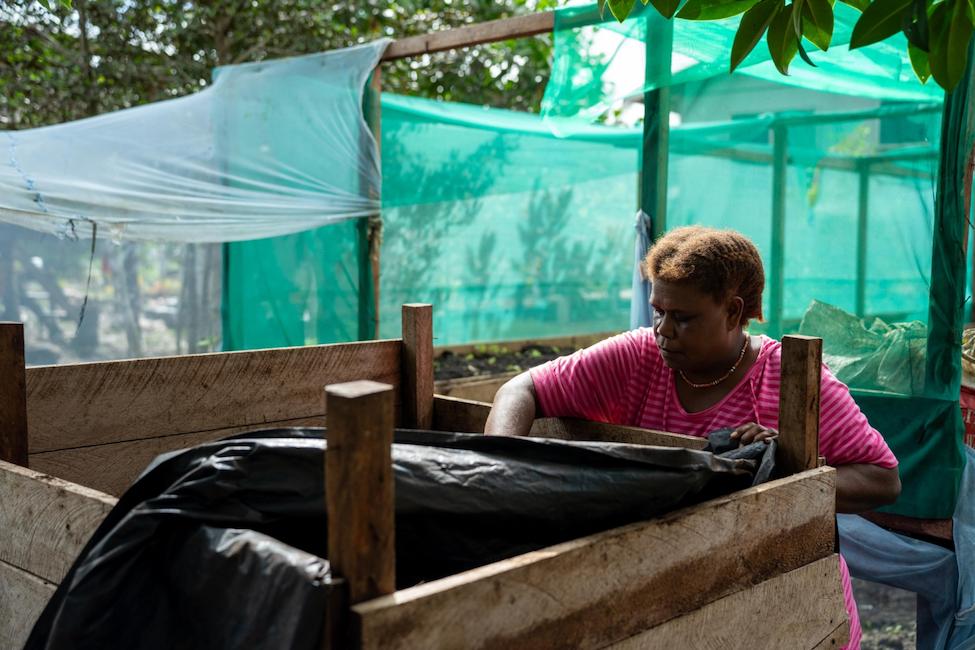
Compost is rapidly turning into soil in a bin on a far end of the garden.
Shortly thereafter, we meet Faye Saemala, who welcomes us and leads us into a small raised house that serves as the community hall. The hall serves as a convenient venue which supports women coming together for meetings and sharing their ideas during the course of the project.

Folks entering community hall. Video credit: Jason Gagame
Faye, now 70 years old, remembers coming to the village as a child to visit her grandparents, who grew up here.
There are so many changes here since I was a child, mainly that there used to be plenty of land to grow food."Faye Saemala
Faye went on to discuss other key changes resulting from environmental impacts; with less food, there are fewer community meals, and less capacity to take care of the elderly.
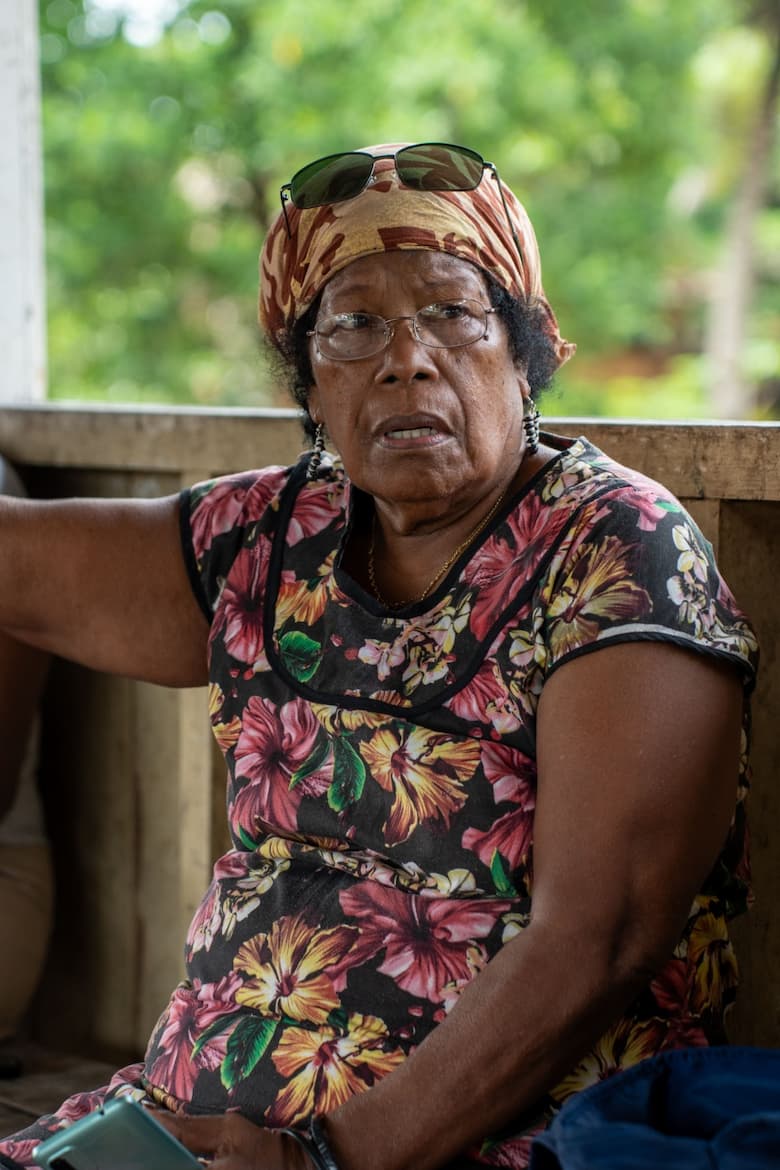
Now, however, she has some hope and trust in what women here can do, as well as in their potential for implementing future projects.
“The garden project is giving younger women knowledge and skills,” she explains. “They are willing to do it on their own because of the confidence gained from the project. Others are learning as well.”
Faye thought for a moment and took the time to look across the community room at several younger women sitting nearby, then speaks again.
“I love my village. I want women here to be happy with their families and enjoy their livelihood. I’m sure with the project this helps them to accomplish this.”
Tina Wale, mother of a 14-year-old daughter, who has been active in the project, looks forward to its continuance.
“The garden has really helped because now we have our own food, we can share it, and also sell the extra for money when the men don’t catch enough fish.”

For her, the garden has provided purpose. Prior to the project, Tina and the other women were solely reliant upon their husbands to provide income from fishing.
That is now shifting.
STPC and the women they work with in remote areas such as Lilisiana are strengthening women’s capacity to engage in policy and decision-making, driving evidence-based and women-led innovations in the region, as well as engaging in national and regional advocacy.
In Lilisiana, seemingly small changes like the garden are causing ripples of change in other ways.
Coalition partners raising their voices and visibility by projects such as this are also deepening the skills of Pacific women leaders for disaster management, with a specific focus on young women and people with disabilities and supporting partners in responding to humanitarian emergencies.
“This is a key project for this place, and women are the key,” Faye Areni, a 39-year-old mother of four children says. “We meet the needs of the community with this project. I want to see this project expand and reach more women across the community. It helps our rights because we learn and benefit, and we hope this project continues to get more support.”
Faye, the local leader of the project, looks forward to the expansion of the project, including acquiring more tools.
She, like so many other women in Lilisiana, wants their children to have education and healthcare. Crops from the garden have proven they can bring the money needed to provide for this, as well as meet their daily needs.
“It’s an opportunity for women to lead and encourage other women in similar communities to do the same thing,” she adds. “We can share this knowledge with our children, as well as with other nearby villages.”
SPTC’s Virginia Tome is aiming to expand the project and begin similar garden projects around other islands in the Solomons.
Carolyn Kitione, SPTC’s Interim regional representative, hopes to see more formal recognition of these women’s work within governments where they live, but in the meantime, is not going to wait.
“I want to see our partners empowered to work and lead their communities,” she says. “We can no longer wait for governments to support what needs to be done.”
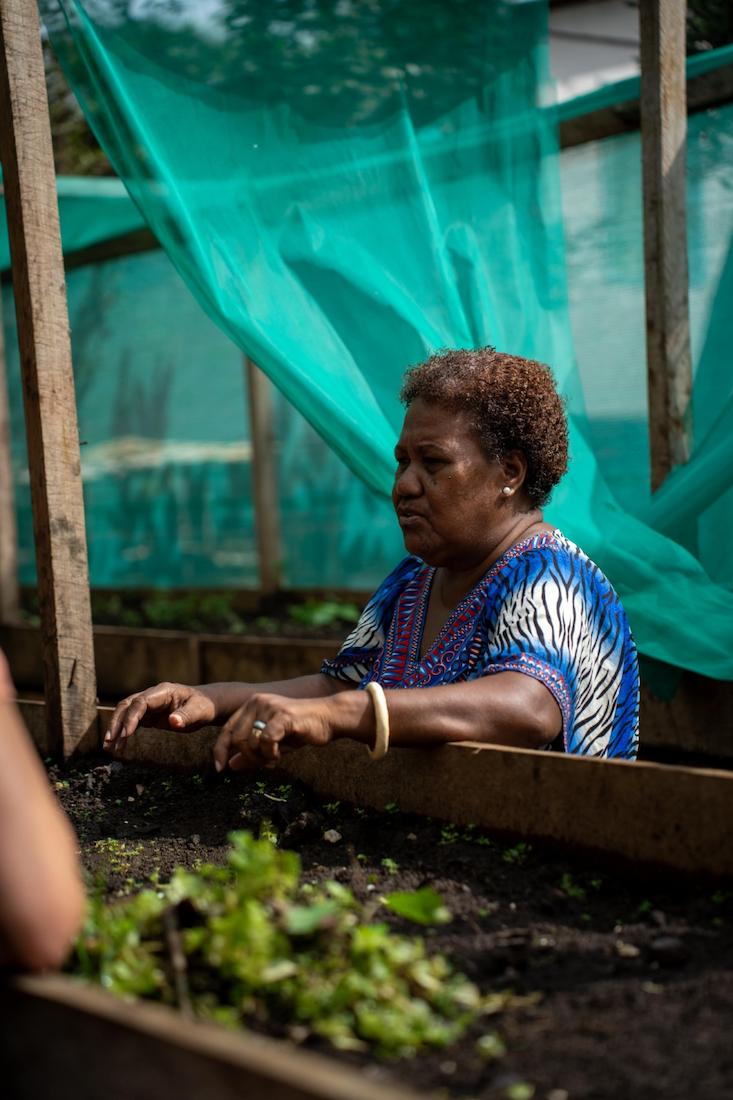
The organizations’ lead in the Solomon Islands, Georgina Ariki, hopes the Lilisiana project becomes a model other coastal villages affected by the climate crisis can emulate, as well as potentially inspire governments to take similar actions.
“If this project becomes stronger, it could show the government how to take action.”
Georgina is also president of the Solomon Islands’ YWCA, which is in partnership with SPTC, in addition to assisting in the implementation of the project.
A little while later several women walk to the nearby ocean as the conversation continues.
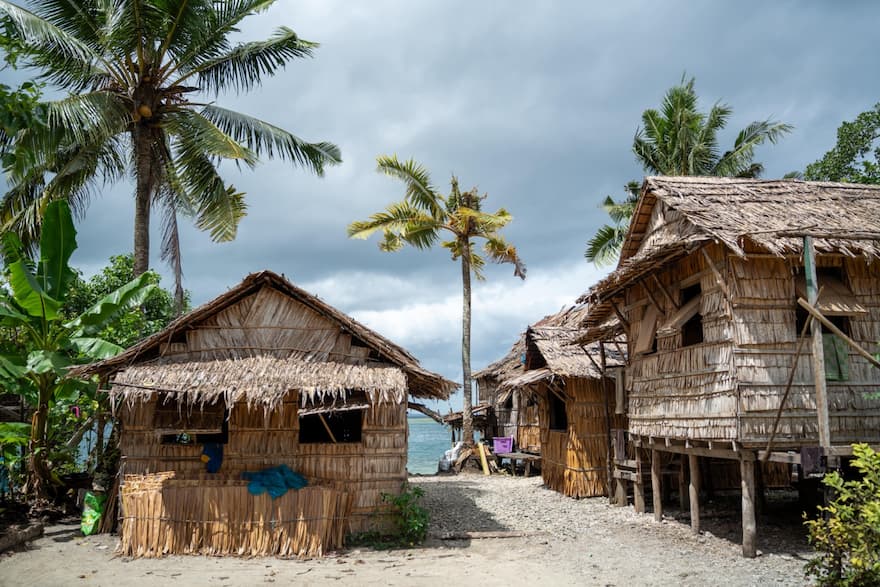
One of these is Basilia Gelibaela, a 34-year-old mother of three young children. Like others, she sees the garden weaving the community closer together.
“Since we are learning together, it is bringing women together,” she says while looking at other women nearby. “We want to see these partnerships grow, and a bigger project will help more of us.”
She pauses to look out at the Solomon Sea, then looks back to me.
“I want the world to respond positively to what we are trying to do here, and to support us if they are able.”
I want the world to respond positively to what we are trying to do here, and to support us if they are able.Basilia Gelibaela



